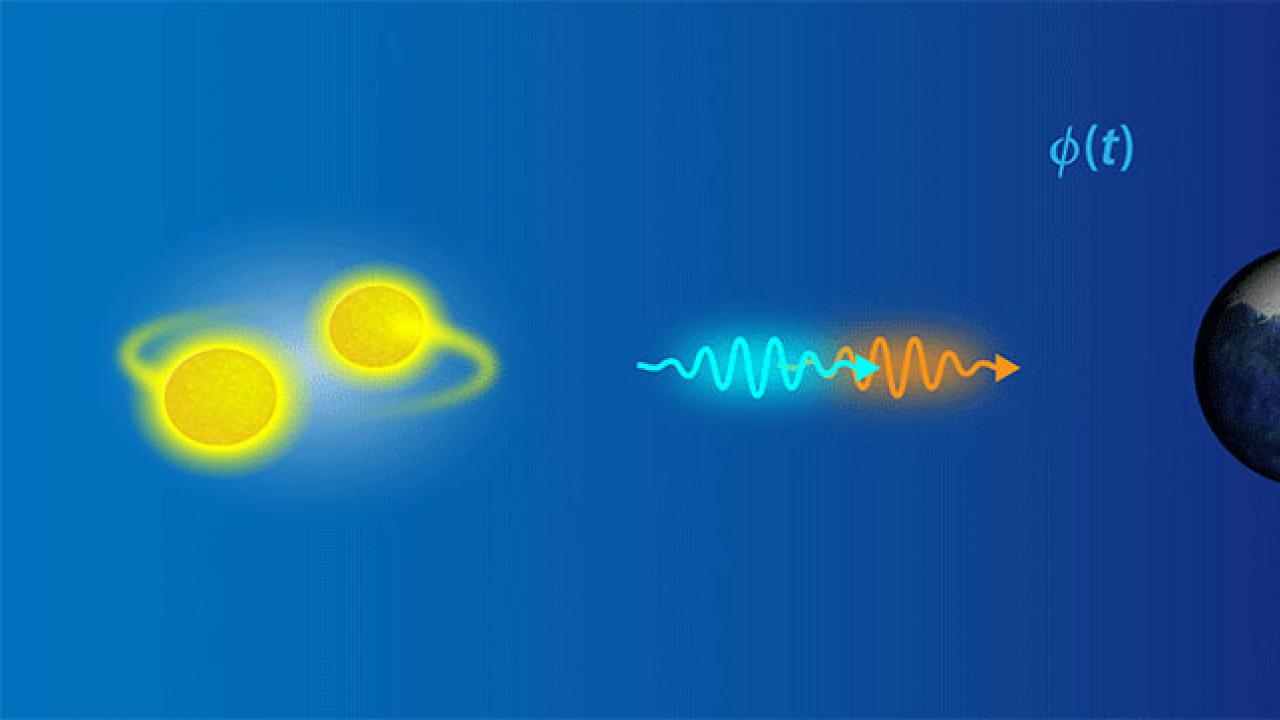
The current theory of gravity physicists use comes from Einstein’s general relativity, and it has predicted most observational data very well, from the dynamics of planets to galaxies. But one piece of data came as a surprise: the universe is expanding, and the rate of expansion is accelerating, not decelerating. Theorists’ efforts to explain this surprise are broadly known as the study of “dark energy,” and they cover several possibilities. One class of ideas proposes that gravity works differently over cosmic distances, and the three newly activated gravitational wave detectors mean that some of those ideas can be tested.
And now they have been, thanks to the detection of signals from the collision of two neutron stars that happened billions of years ago, evidence of which traveled about 130 light years to reach Earth in 2017. Those signals have been explored in four new papers, including one written by ICTP cosmologist Paolo Creminelli and his colleague Filippo Vernizzi of the CEA Saclay, France, who was once a post-doc at ICTP. These papers used the new experimental observation to cleanly eliminate several alternative theories of gravity.
“What is really cool is the experimental observation,” Creminelli says. A strong signal was observed at the new gravitational wave detectors, the Advanced LIGO detectors, located in Louisiana and Washington in the United States, and Advanced Virgo detector, located near Pisa, Italy, on August 17, and two seconds later, a burst of gamma rays were detected from the same area of the sky. Telescopes around the world swung around to confirm that the gravitational wave and the gamma rays came from the same source, emitted billions of years ago. “As theorists we’re not very interested in the source,” Creminelli says. “What’s interesting is that you observe both the gravitational radiation and the electromagnetic radiation coming from the same event, arriving at basically the same time.”
“Before this observation, gravitational waves could have had a very different speed from light,” Creminelli explains. Previous data didn’t give many clues: theorists had a relatively wide estimated range for the speed of gravitational waves. The fact that gamma waves and gravitational waves arrived at the same time means that these very different types of waves travel at the same speed within an error of 1 part in 10^15. That’s a huge improvement over previous knowledge, an improvement of 14 orders of magnitude. “So really it’s a revolution. It’s a single event, but it’s enormous.”
In the simplest theories about gravity, Creminelli explains, the theory of special relativity says that any massless particles will travel at the same speed. Both the graviton and the photon are massless particles, the components of gravitational waves and light. “So for the simplest theories, it’s a wonderful check on what was thought,” Creminelli says. “On the other hand, it’s not so difficult to imagine that something different can happen.”
“We know that light travels at a different speed inside a material,” Creminelli explained, like water. In the vacuum of space physicists don’t expect that to happen for light, but gravitational waves could behave differently. “We don’t know what the universe is made of—there’s a component of the energy budget of the universe that’s unexplained, that we call ‘dark energy’, which means we don’t know what it is.” Dark energy is only detected because it has gravitational pull: it does not emit or reflect light or interact with known particles. Dark energy could be a sort of medium that permeates space, Creminelli explains. “In the same way that a material can change the speed of light, this medium might change the speed of the propagation of gravitational waves.”
Several theorists of gravity proposed ideas based on the possibility of a dark energy medium, and with this new observation of both gamma rays and gravitational waves, they have to look elsewhere. “Either the medium is not there or the gravitational waves do not feel this medium,” Creminelli says. “From the point of view of that data this is good, but the theoretical problem of the accelerating expansion of the universe remains.”
This gravitational wave observation does kill some theories, disproving their proposed structure for how the universe and gravity operate. But some are still alive, and the gravitational wave detectors will only provide more data for theorists to work with. “We are now trying to understand whether our results are not changed by quantum corrections,” says Creminelli. “It’s a constant process of theory creation and dismissal: we’re sort of exploring all possibilities at this point.” Usually progress is much more incremental in this field: “With the universe, we can’t do experiments like in the lab,” Creminelli says. “We have a lot of problems with gravity, but these observations provided a real jump.”
----- Kelsey Calhoun













